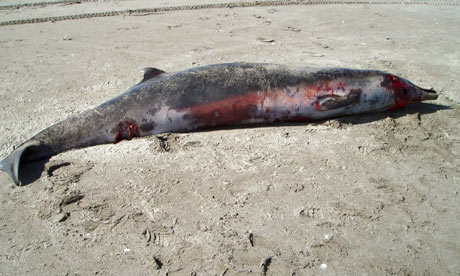The control of marine resources is not something people think about when they imagine the conflict between Israel and Palestine, but these resources, and the control over fishing rights and borders, has been an integral part of nation building throughout the last 150 years.
The American government has battled over fishing grounds on both coasts. In 1877, Spencer Fullerton Baird went to Halifax to testify regarding the matter of American fisherman operating within Canada's fishing borders. Baird believed that the fish caught in those boundaries were of roughly equal value to those that Canadian fishermen could catch in American waters (which were open to them but not being utilized by Canadian fishermen very often), but the Halifax Arbitration disagreed. The Arbitration concluded that the United States Government was ordered to pay Canada a total of 5.5 million dollars in compensation for the fish caught in Canadian waters (Canadian and British authorities originally asked for over 14 million and the U.S. Government felt they owed about 1.5 million so it seems a relatively good compromise). Baird went back to Washington with a plan to expand America's understanding of its marine resources in the hopes of mitigating another disaster like that at Halifax. Americans knew little of their own coast, and that lack of knowledge had caused their fisherman to overfish Canadian inland fisheries and to underfish their own stocks.
Lissa Wadewitz's book The Nature of Borders: salmon, boundaries, and bandits on the Salish Sea outlines the many groups who had interests in the fishing boundaries established in the Pacific Northwest. According to Wadewitz, the first set of boundaries pushed native fisherman from their traditional fishing borders (or lack of borders because boundaries were seasonal and familial, not based on ownership or statehood per se). After native fishermen were pushed from traditional fishing grounds, the nation states of Canada and the United States sought to impose borders on salmon fisherman. But, salmon are anadromous fishes- meaning they are born in fresh water, live most of their adult lives in salt water, and then travel back to fresh water to spawn and die. The constant rotation and movement of fish stocks meant that salmon did not pay attention to nationally drawn and defined borders: they crossed from American to Canadian waters continuously, making regulation quite difficult. What arose, and what is most interesting about this book, is a group of pirates and bandits that hopped back and forth across the state-defined borders to fish the stocks when available. When reading the book, you can't help but root for the pirates, who follow the fish, not the law.
Fishing rights and the extension of national borders for marine resources have a large place in nation building. The ocean is a great source of wealth for nation states that can lay legal claim to territory: fishing rights, mineral rights, offshore drilling, etc. But for those unable to lay claim to their coastline, and the resources that that entails, the marine bounty remains fleeting and only temporarily available. Americans might take for granted the maritime rights we have now (I do take for granted that our resources extend to the continental shelf) but imagine if we did not have those resources- we would be cut off from a large sources of energy and protein. The importance of the marine environment to the nation state cannot be overstated. While much of my blog is spent highlighting the importance of the ocean scientifically, politically, it is a great asset to nations. The many important aspects of the ocean, and all water resources, only highlights the importance of studying the history of them.

